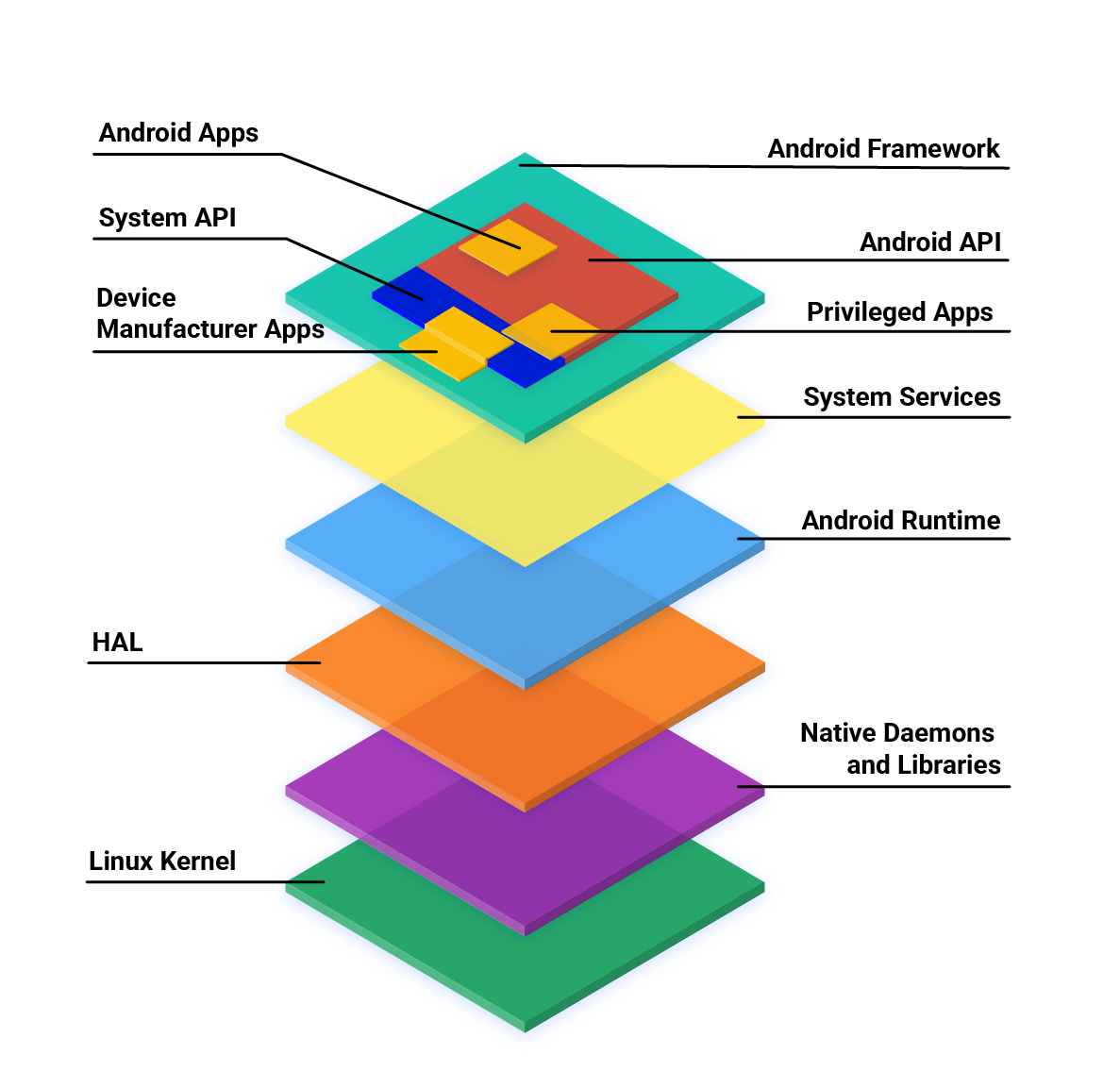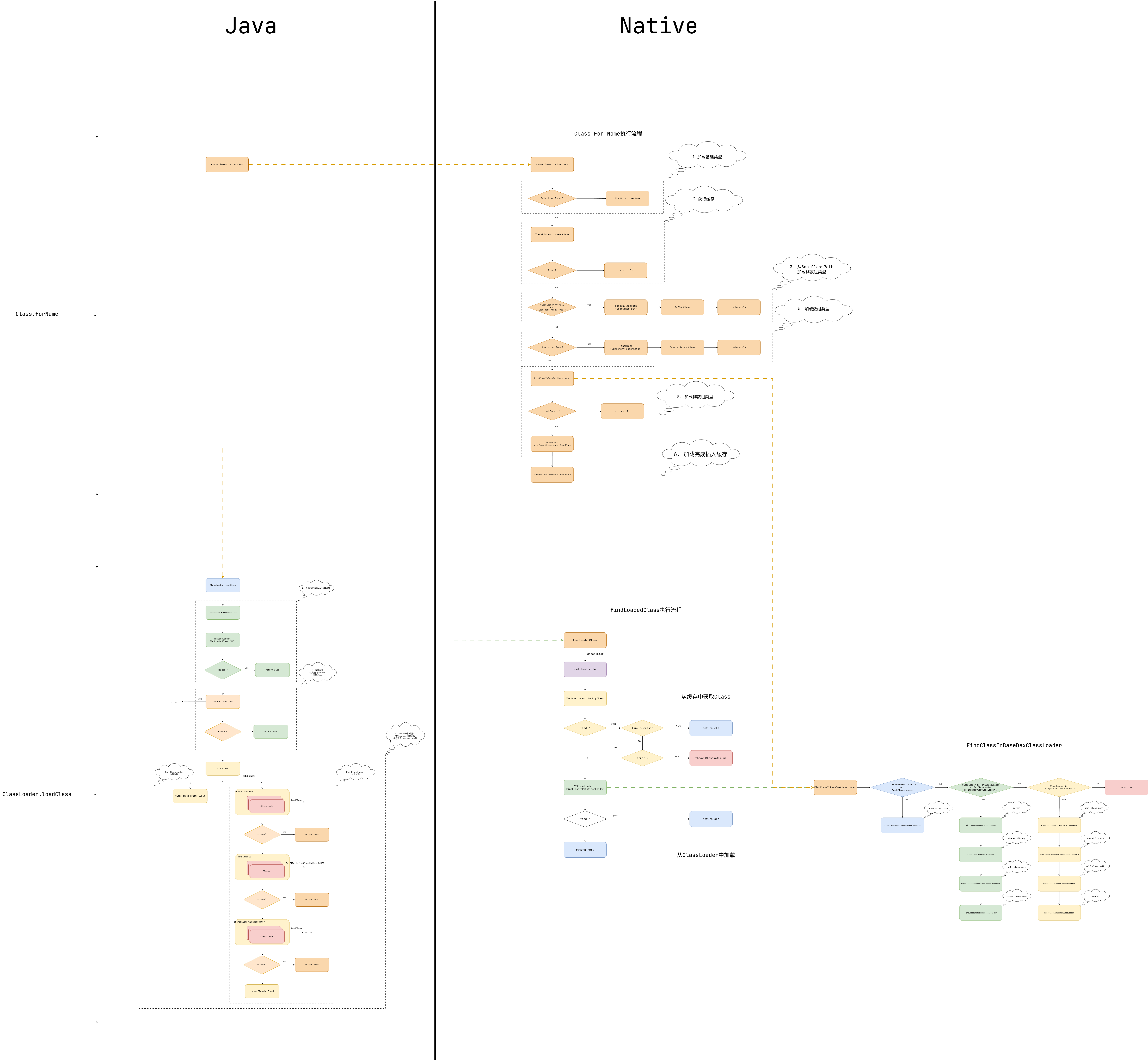Android libbpf Demo 书写

——From ebpf.io
基础概念
- vmlinux 文件是什么
vmlinux 文件是一个 ELF 文件,可以理解就是 linux 内核
在linux系统中,vmlinux(vmlinuz)是一个包含linux kernel的静态链接的可执行文件,文件类型可能是linux接受的可执行文件格式之一(ELF、COFF或a.out),vmlinux若要用于调试时则必须要在开机前增加symbol table。
——From Wikipedia
- vmlinux.h 是什么
vmlinux.h 是使用工具为 vmlinux 内核文件生成的的所有类型定义文件。
vmlinux.h 部分内容输出

大体的逻辑如下
1
2
3
4
5
6
7
8
9
10
11
12
13
14
15
16
|
#ifndef __VMLINUX_H__
#define __VMLINUX_H__
struct ... {}
struct ... {}
struct ... {}
struct ... {}
......
#endif
|
refs:https://www.ebpf.top/post/intro_vmlinux_h/
Demo开发
refs:https://blog.csdn.net/weixin_45092290/article/details/138767704
前置准备
1
2
3
4
5
6
| # 安装常规编译工具链
apt install clang clangd lldb cmake
# 安装libbpf-dev(安装 bpf/bpf_helpers.h 等头文件)
apt install libbpf-dev
# 提取vmlinux.h头文件
bpftool btf dump file /sys/kernel/btf/vmlinux format c > vmlinux.h
|
内核Demo程序编写
clang -target bpf -I. -c ebpf-demo.bpf.c -o ebpf-demo.bpf.o
// ebpf-demo.bpf.c
1
2
3
4
5
6
7
8
9
10
11
12
13
14
| #include "vmlinux.h"
#include <bpf/bpf_helpers.h>
SEC("kprobe/__arm64_sys_openat")
int bpf_prog(struct pt_regs *ctx) {
u32 pid = bpf_get_current_pid_tgid() >> 32;
u64 *count, init_val = 1;
bpf_printk("opennat calced");
return 0;
}
char LICENSE[] SEC("license") = "GPL";
|
Skel生成
bpftool gen skeleton ebpf-demo.bpf.o > ebpf-demo.skel.h
用户态Demo程序
clang -Wall -I. -c ebpf-demo.c -o ebpf-demo.o
// ebpf-demo.c
1
2
3
4
5
6
7
8
9
10
11
12
13
14
15
16
17
18
19
20
21
22
23
24
25
26
27
28
29
30
31
32
33
34
35
36
37
38
39
40
41
42
43
44
45
46
47
48
49
50
51
52
53
54
55
56
57
58
59
60
| #include <stdio.h>
#include <stdlib.h>
#include <unistd.h>
#include <sys/resource.h>
#include <bpf/libbpf.h>
#include "ebpf-demo.skel.h"
static int libbpf_print_fn(enum libbpf_print_level level, const char * format, va_list args){
return vfprintf(stderr, format, args);
}
static void bump_memlock_rlimit() {
struct rlimit rlimt_new = {
.rlim_cur = RLIM_INFINITY,
.rlim_max = RLIM_INFINITY,
};
if (setrlimit(RLIMIT_MEMLOCK, &rlimt_new)) {
fprintf(stderr, "Fail to increate the limit!");
exit(1);
}
}
int main() {
struct ebpf_demo_bpf* skel;
int err;
libbpf_set_print(libbpf_print_fn);
bump_memlock_rlimit();
skel = ebpf_demo_bpf__open_and_load();
if (!skel) {
fprintf(stderr,"Fail to open bpf");
}
err = ebpf_demo_bpf__attach(skel);
if (err) {
fprintf(stderr, "Fail to load %d", err);
goto cleanup;
}
fprintf(stderr, "Successfully started! see output by cat /sys/kernel/tracing/trace_pipe\n");
for(;;) {
fprintf(stderr, ".");
sleep(1);
}
cleanup:
ebpf_demo_bpf__destroy(skel);
return -err;
}
|
编译总程序
compile.sh
1
2
3
4
5
6
| #!/bin/zsh
rm ebpf-demo ebpf-demo.bpf.o ebpf-demo.skel.h
clang -O2 -target bpf -I. -c ebpf-demo.bpf.c -o ebpf-demo.bpf.o
bpftool gen skeleton ebpf-demo.bpf.o > ebpf-demo.skel.h
clang -Wall -I. -c ebpf-demo.c -o ebpf-demo.o
clang -Wall ebpf-demo.o -L/usr/lib64 -lbpf -lelf -lz -o ebpf-demo
|
运行程序
1
2
3
4
5
6
7
8
9
10
11
12
| ➜ code ./ebpf-demo
libbpf: loading object 'ebpf_demo_bpf' from buffer
libbpf: elf: section(3) kprobe/__arm64_sys_openat, size 72, link 0, flags 6, type=1
libbpf: sec 'kprobe/__arm64_sys_openat': found program 'bpf_prog' at insn offset 0 (0 bytes), code size 9 insns (72 bytes)
libbpf: elf: section(4) license, size 4, link 0, flags 3, type=1
libbpf: license of ebpf_demo_bpf is GPL
libbpf: elf: section(6) .symtab, size 96, link 1, flags 0, type=2
libbpf: looking for externs among 4 symbols...
libbpf: collected 0 externs total
libbpf: object 'ebpf_demo_bpf': failed (-22) to create BPF token from '/sys/fs/bpf', skipping optional step...
Successfully started! see output by cat /sys/kernel/tracing/trace_pipe
.......
|
你可能会疑惑,输出呢?
由于我们内核程序使用的bpf_printk。
所以输出会被重定向到/sys/kernel/debug/tracing/trace_pipe文件
直接cat /sys/kernel/tracing/trace_pip即可。
你可能还有疑惑。
因为你cat /sys/kernel/tracing/trace_pipe 的输出结果很可能是空的。
那是因为你没有开启 trace
执行如下 shell 脚本
echo 1 > /sys/kernel/tracing/tracing_on
总结
1.eBPF 的程序其实包含两个部分
a. 内核态程序(这个程序会在内核虚拟机内执行)
b. 用户态程序——前端(这个程序会用于加载并与内核态程序通讯,虽然 Demo 中没有体现通讯这一过程,但是他是可以实现的)
2.libbpf 程序
a. 最终产物只有一个 elf 文件,这个 elf 内包含用户态程序 & 内核态程序的二进制数据。
b. libbpf 编译过程中会生成 skel 文件,这个文件内包含一些 eBPF 生命周期模板方法。
c. libbpf 以及其他 eBPF 脚手架一样,都只是 eBPF 前端(后端在内核态上运行)
eBPF 的脚手架特别多,libbpf 只是其中一种。
常见的有
所以没必要纠结需要使用哪种,哪种顺手就用哪种~







